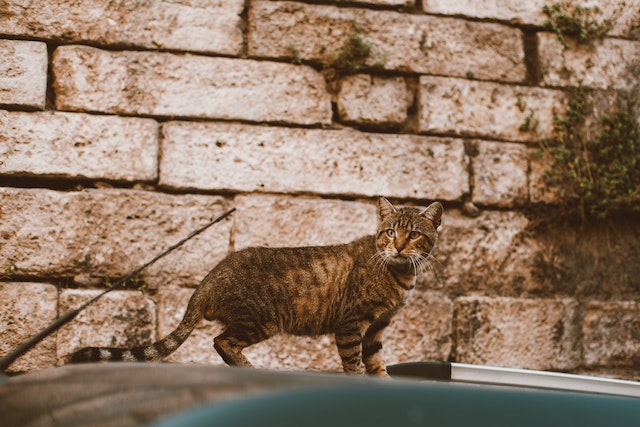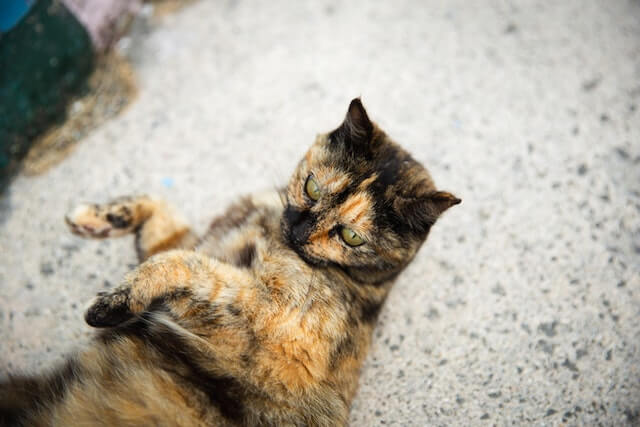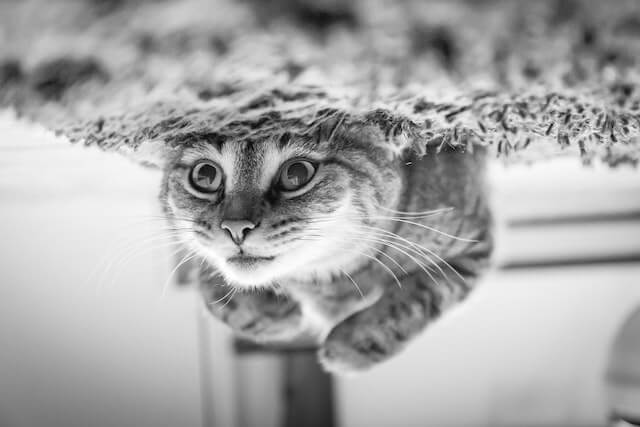The Black-Footed Cat, Smallest And The Deadliest Wild Cat of Africa

The black-footed cat, commonly known as the small spotted-cat is the smallest African cat falling in the wild category. As the name suggests, the soles of its feet are black or dark brown.
The first known black-footed cat was discovered in Karoo (semi-desert natural region), South Africa and found its mention in the year 1824. (Source: Wikipedia)
BEHAVIOUR
The black-footed cat hunts only at night (nocturnal), during the day time they like to rest in their shelter or burrows left by the termite or unoccupied springhare.
They cover a large territory compared to their female counterparts. At least four female ranges are covered under the part of one male black-footed cat. Female mark the territory through a scented-marking (emitting small amounts of urine in a fine spray) as well as to indicate the male about their reproductive state.
Due to their wild nature, these cats are extremely non-social. As the cats are terrestrial, their metabolic rate is high (which means they are always hungry). Every night they need food of about one-third of their body weight.
While communicating with kittens or during breeding time, the black-footed cat can be vocal. The males may mate with up to five females who mature in seven months compared to males who have a maturity period of nine months.
One to four kittens are born in one litter; the duration of birth is less than 70 days. The Weaning period is about two to four months, after which the kittens become independent.
Body Structure
The tail is relatively short measuring less than 40% of its head-body length and is marked with a black tip.
The head of the black-footed cat is similar to that of domestic cats and it has large ears and eyes. A black-footed cat is weaned at the age of two months and becomes independent after four months.

Characteristics
| Name | Black-footed cat or small-spotted cat |
| Scientific Name | Felis nigripes |
| Origin | South Africa |
| Other places where this species is found | Namibia, marginally into Zimbabwe, and in extreme southern Angola. |
| Population | Less than 10000 |
| Average age | Between 10 to12 years (kept in captivity) and around 7 years in the wild |
| Weight | up to 2 Kg (Male), up to 1.5 Kg (Female) |
| Length | 38-43 cm |
| Height | 25 cm |
| Diet | Carnivorous (consists of Rodent, Birds, insects, reptiles etc.) |
| Litter Size | 1 to 4 cubs |
Also Read Siamese Cat, an Intelligent Talkative Breed From Thailand
Habitats
Apart from South Africa, Namibia and the Botswana, Steppe and savannah habitats are their preference, such as the Karoo and Kalahari Deserts.
The black-footed cat needs tree cover and sparse shrub for hunting purposes, and hollowed-out termite mounds or burrows for sleeping in during the day.
They are found primarily in dry regions with short to medium length grass plains, scrub desert, and sand plains.
Humans-Black footed cat conflict
The black-footed cat is shy and does not pose any threat to humans and only hunts at night. Their prey includes mice, rabbits, and birds.
Due to their high metabolism rate, these cats need food very often because of which they have adopted three hunting techniques.
1) The slow hunting technique in which cats slowly and steadily move towards her hunt.
2) The fast hunting technique in which the black-footed cat jumps from inside the grass to catch hold on to her prey.
3) The sit-and-wait hunting technique in which the cat sits and may wait for hours before the prey has arrived.

Facts about Black-footed cats
Given below are a few facts which you might find interesting about this feline.
1) The black-footed cats, both male and female, have their territory defined by urinating. Males may spray up to a dozen times in an hour.
2) This cat is considered to be the smallest wild cat species in Africa.
3) At the time of birth, the kittens weigh merely 60-90 gm.
4) These cats sleep during the day time and can walk up to 35 km at night to hunt for their prey.
5) Although the black-footed cat is small in size, it can take down hares and even small bustards.
6) From their looks, they look quite adorable, but these cats are believed to be the deadliest. Their successful kill rate is nearly 60% of hunts when compared to other wild cats, such as lions and leopards, who rarely succeed more than 20% of the time.
These cats are capable of hunting nearly 15 birds or rodents in a single night.
7) Their skin color is pink while other wild cats have a dark tan to black color.
8) The black-footed cats have wonderful eyesight which is six times better than that of humans.
9) Apart from the night vision capability, these cats have wonderful hearing capability that can pick up even the tiniest sound.
10) This cat doesn’t go by the name as only the underparts of the paws are black.
Conclusion
If you are adored by the looks of the black-footed cat then think twice before keeping them as pets because this cat belongs to the wild and cannot be good pets. If you still want them, then get a kitten and train her for almost two years, even then no body knows how they are going to react.
Recently two kittens, Ryder and Skyler were brought to San Diego Zoo and they had their first meaty meal (Source: Fox news )
Also Read The Maine Coon Cat, One of the Oldest Natural Breeds in North America
FAQs
Q) Do black footed cats attack humans ?
A) Although the cat is a ferocious wild animal and a great hunter but there prey includes Rodents, birds, reptiles, scorpions, gerbils etc. but does not pose any threat to humans. They can bite only in self-defense if provoked.
Q) Where do black footed cats live ?
A) The black-footed cats are found in a few regions of Africa, namely Botswana, Namibia, and South Africa. The areas which have dry grass and higher density of rodents are the favorable places of black-footed cat.
Q) Can black footed cat be pets ?
A) You can keep them as pets, but to train such a wild ferocious animal is not an easy task. It will take around 2 to 3 years to train them if you want them as pets, but there is a possibility that the black-footed cat might attack your other pets.
In other words, this cat is a total mystery.
Q) What do black footed cats eat ?
A) These cats are carnivorous and their diet includes Rodents, Reptiles, Scorpions and Gerbils. Apart from small prey, they can go after larger preys like Cape Hare and northern black korhaan.
Q) How do black-footed cat reproduce ?
A) These cats produce seasonally and can have 1-4 kittens per litter. They mate during the winter period and the gestation period is around two months.



